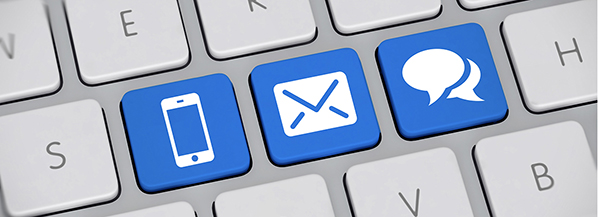Having options is great, but not everyone uses the same communication tools in the same ways. If you’ve ever received a two-word email that didn’t address your questions, or an instant message that was more like the first chapter of a novel, then you’ve experienced this. For those who are starting out in the business world or on new technologies, it can be easy to overuse or misuse one. But there are some pretty straightforward guidelines that can help anyone struggling with which to use when.
Of course, all of these tips mean nothing if some people lack awareness. Sharing this information with colleagues—especially if you’re on a team—can help you all save time, headaches, and most importantly miscommunications that can make everyone’s life harder.
Know Your Goal
Are you trying to convey a lot of detail or instruction? Do you need a quick answer? Are you hoping to brainstorm ideas? Knowing what you want from your recipient(s) will give you the clearest path to the right tool. And just like everything else with technology, the more you do this, the faster it will become second nature. You’ll find yourself clicking the chat icon or setting up a call without a second thought.
Breaking Them Down
Email is for more complicated or complex information and should almost always be used for knowledge sharing. Of all the communication tools available, email is the most searchable and referenceable. So, you’re doing your coworkers and customers a favor by emailing information that you know will affect their jobs or expectations. Emails also allow the recipient to get to it at their own pace which makes it more likely they’ll have the time to digest it when they get to it.
Examples of when to use email:
- Training someone on a new process or tool
- Either the original message, response, or both require time for thought or detail
- You and/or the recipient should be easily able to search for the contents later
- The communication needs to be documented for HR, legal, or auditing reasons
- The request or shared information needs to be framed with context or backstory
Instant Messaging (IM) is for quick questions and anything that is time sensitive. Of course, email can always be set as ‘Important’ before sending, but people work through email at different paces and priority levels against other work. If something is truly urgent, using IM cuts through the email noise. IMs are interruptive though, so it’s most kind to keep your messages to yes/no questions or no more than 3-sentences. When fun is the goal, IMs and group IMs are excellent since most platforms have a ton of emojis, gifs, stickers, and video that you can integrate into the conversation. And letting the fun flow on a group chat allows participants to come and go as their time allows.
Examples of when to use an IM:
- A simple question that only requires a simple answer
- The response is time-sensitive (this is particularly useful if you reference a previous email)
- You’ve developed shorthand with the person, like a close teammate
- The chat participants need to be able to multitask
- Quick fun breaks or personal asides
- Checking to see if the recipient received an email or has time for a call
Phone calls and web conferencing are perfect when there’s a larger conversation that requires volleying ideas, coming to agreement via a common path, or when the relationship is more important. Typically, it’s considerate to set up a commonly available time or, at the very least, check with the recipient(s) before ringing their phone. While a lot more can be accomplished on a call, they are the most interruptive of all communication tools. It’s best to give the other party a heads up so they can make sure they have time for a conversation instead of bite-sized IMs or time-managed emails.
Examples of when you may need a call:
- Brainstorming complicated ideas, particularly with more than one person
- Providing feedback on or improvements to completed work
- Troubleshooting roadblocks or large issues
- When it’s important that due time and thought be given to a specific conversation
- When tone is important, like conveying sympathy or building interest
- Building the relationship is as important as the information
- When your sharing heavy news that will impact the recipient
Do What’s Best for Them
These guidelines are just that: guidelines, and not the natural rules. Especially if you’re trying to get through to someone effectively (like win someone over or get a quicker response), knowing the person’s communication style can go a long way to helping them feel more comfortable responding to you. If someone seems shy and ready to get off the phone each time you call, switch to email (external) or IM (internal) to check in. If someone doesn’t seem to have time for your emails or messages, schedule a call so their time is blocked off and you can address any roadblocks. Try not to enforce your own preferences on your recipients and you’ll typically find them easier to reach.
Use the Best Tools the Best Ways
HDCav clients always have access to the latest communication and collaboration tools. And our Help Desk team is always available to help them use their tools as productively as possible. Of course, our Training Library also has some excellent resources to help users get up to speed on some of the most commonly used platforms. It’s free and available to anyone.
If we can help your company communicate better with the most modern technology available, just contact us. It doesn’t take long to understand what it takes.

